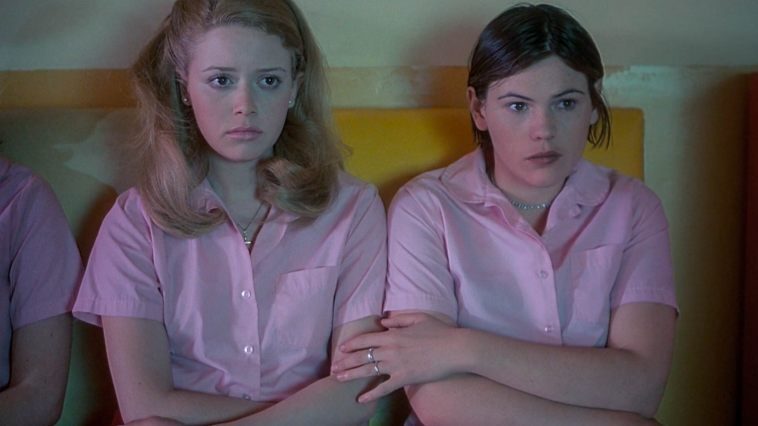

What is queerbaiting, exactly? From blog posts to headlines, it is not uncommon to find this word splashed across the top of a webpage with an angry article of accusation typed furiously beneath. But what does it mean in the world of pop culture? Queerbaiting is defined as “a marketing technique involving intentional homoeroticism or suggestions of LGBTQ+ themes intended to draw in an LGBTQ+ audience, without explicit inclusion of openly LGBTQ+ relationships, characters, or people.” In the past few years, the world has witnessed a steady increase in the representation of queer characters in film. As a result, attention and scrutiny over how these characters are portrayed have also come into the public eye, addressing the characters’ characteristics, the actors who play them, and whether or not the characters openly identify as queer. With a history of queer film that only goes back around fifty years, giving accurate representation to the community rather than dancing around labeling characters to maintain the general audience’s acceptance, has become a major issue within queer cinema.


The term ‘queerbaiting’ was first coined back in the 1950s and 60s, based on the preexisting term, racebaiting, which referred to racial injustice or hatred often based on political stances. At this time, queerbaiting mostly had a similar meaning to racebaiting in that it defined actions that were deemed anti-LGBTQ+ or that provoked violence against the community. In the 2010s, however, the term began to refer moreso to a facade of inclusion in popular culture. In particular, queerbaiting was usually used to accuse media like TV shows and movies of having characters that depict queer characteristics but never define themselves as queer. It was only a means to attract queer audience members while still appealing to the heteronormative culture of the general public. Some common examples of queerbaiting in the mainstream market include Sherlock, where fans accused Benedict Cumberbatch and Martin Freeman’s characters of intending to have a more intimate relationship, and Pixar’s Luca, a film with so many potential queer metaphors and characters they could write a book of their own.
Recognizing queer people as a potentially successful demographic of the film market is a relatively recent phenomenon, coming as a direct result of the post-Stonewall LGBTQ+ rights movement. Hollywood’s first attempt to partake in what we now know as ‘queer cinema’ was a film adaptation of Mart Crowley‘s 1968 play, The Boys in the Band, directed by William Friedkin in 1970. Despite its groundbreaking attempt to jumpstart a queer cinematic canon, The Boys in the Band ended up receiving quite a bit of pushback because of its depiction of gay and bisexual men. Rather than being a celebration of queer culture, the characters were all struggling and unhappy, highlighting their identities as more negative in a heartless world. Other films that came out around this time began to show homosexuality in a more positive light, but others maintained negative stereotypes, with queer people often being the villains or the butt of a joke. Over the next thirty years, queer roles became more common and homophobia in mainstream films began to lessen. For queer films, the 1990s were seen as the heyday for independent productions. More openly queer creators came in and made roles that celebrated queer identity and twisted gender roles more than what had previously been done. Slowly creeping into the mainstream, the past twenty years have seen an increase in the variety of queer films or programs featuring queer-coded characters.
Even though the inclusion of queer plotlines and characters has been increasing since the 70s, many mainstream production companies have settled for including queer-coded characters to bring in the representation-starved LGBTQ+ audience. This ‘facade’ of inclusion can have harmful effects on the queer community and how the rest of the world views it. Queerbaiting is often used as a tactic to capture the attention of queer audience members without suffering whatever economic losses might occur if production were to have a fully fleshed-out queer character or relationship. 

At the same time, one of the most common places the word ‘queerbaiting’ appears online is about celebrities. Queerbaiting is a term that refers to media that fails to fully realize queer characters or fictional relationships. As they are more complex than fictional plots, real people cannot queerbait in the same way. In the past few years, the internet community has accused people such as Harry Styles and Billie Eilish of queerbaiting because of how they portray themselves. The debate mostly stems from the attitude that portraying themselves in a specific way or playing queer characters but not defining themselves is a sort of betrayal and only half support to the community. They benefit from a queer fanbase, but by choosing to not come out as anything, they don’t ‘deserve’ the support they are getting. However, when and if someone comes out should be an individual’s choice, and the belief that the artists owe it to their fans only serves to reinforce heteronormative standards of queerness as a sense of other. 

While the past fifty years have seen the birth and cultivation of queer cinema, there is still a very long way to go in terms of normalizing queer relationships and characters in mainstream media. Often, films will air on the side of caution to prevent backlash from a more conservative and heteronormative audience, keeping relationships undefined. Queerbaiting in this sense means to just profit off of queer audience members who may be attracted to a film or a character because of the potential of queer representation. For a community that is commonly underrepresented, a film is often a major place for young people to turn for education and to further understand their identities. The trend of queer film production is constantly on the rise and demand is higher than ever, but while queerbaiting and using a facade of inclusion to bring in more queer audience members still occurs, there is still a long way to go.
